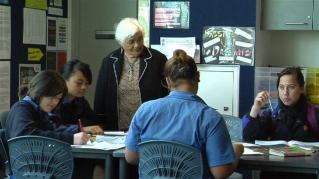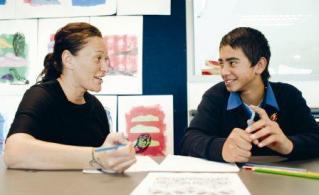Section navigation
Key research evidence
The American researchers Louis, Marks, and Kruse (1996) identify five interconnected elements of an effective professional learning community:
- a set of shared values and expectations about student learning, teaching, and teachers’ roles
- a collective focus on student learning
- sharing of expertise amongst teachers on their developing skills and knowledge
- deprivatised practice, whereby teachers observe each others’ practice closely and give each other focused feedback
- reflective dialogue and in-depth conversations about teaching and learning.
More recent New Zealand research contends that a critical element for raising student achievement levels is maintaining a collective focus on student learning (Timperley, Wiseman, & Fung, 2003). In their research, Helen Timperley and her colleagues suggest that when teachers focus closely on student achievement data in their professional conversations, schools show higher patterns of improved student achievement. They also suggest that teachers become more reflective about their practices when they focus closely on student achievement data in their professional conversations. “If achievement is used as the touchstone for judging the effectiveness of programmes, rather than particular teaching styles or methods, then teachers are more likely to become data-based inquirers into the impact of their practice on their students” (p.11).
Other more recent New Zealand research (related to ‘Te Kotahitanga’) suggests that focused, supported and strategic professional learning and development is extremely important if teachers are going to be effective in raising Māori student achievement levels. Te Kotahitanga is based on the premise that teachers’ beliefs or discursive positions are the key to their being able to make a difference for Māori students. It requires teachers to critique their beliefs, re-position themselves, and act upon any changes they make to their beliefs about the potential of Māori students.
Having undertaken some initial interviews with students, teachers, school leaders, and family/whānau/iwi members, the researchers developed a profile of an effective teacher of Māori students (the “Effective Teaching Profile”). This was initially explored by teachers through an intensive five-day hui (workshop) and three in-class observations and interactive feedback sessions with the researchers. After the third set of observations, the researchers were able to make the following conclusions:
- “There is a strong indication that as teachers implemented this Effective Teaching Profile … in their classrooms, Māori students’ overall performance on a range of indicators improved … Māori students became more academically engaged, completed more work in class, attended class more regularly and saw their summative assessment scores improve.
- “It was demonstrated that teachers, from a range of backgrounds and with differing levels of teaching experience, both Māori and non-Māori, were able to come to terms with the new understandings about relationships and approaches to pedagogy, provided they were supported to an optimal level by appropriate professional development …
- “It would appear that Māori students in classes taught by teachers who were fully able to participate in all components of the [professional development] intervention, demonstrated higher scores in some conventional school and researcher generated measures of academic achievement than other comparable groups of Māori students …
- “The intervention indicated that the same Māori students in their other classes, taught by different teachers (that is, non-intervention participant teachers) did not improve their academic achievement levels.”
Bishop, Berryman, Tiakiwai, and Richardson, 2003, pp. 198–199
It would appear that focused, supported, and strategic professional learning and development, as undertaken by these teachers, had been effective in strengthening Māori student engagement and achievement levels.


